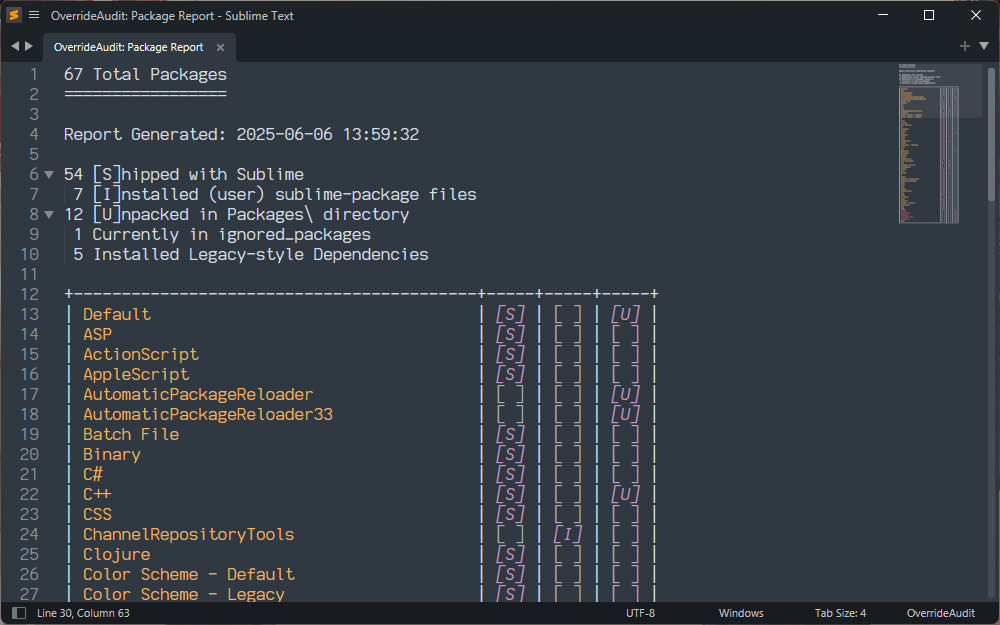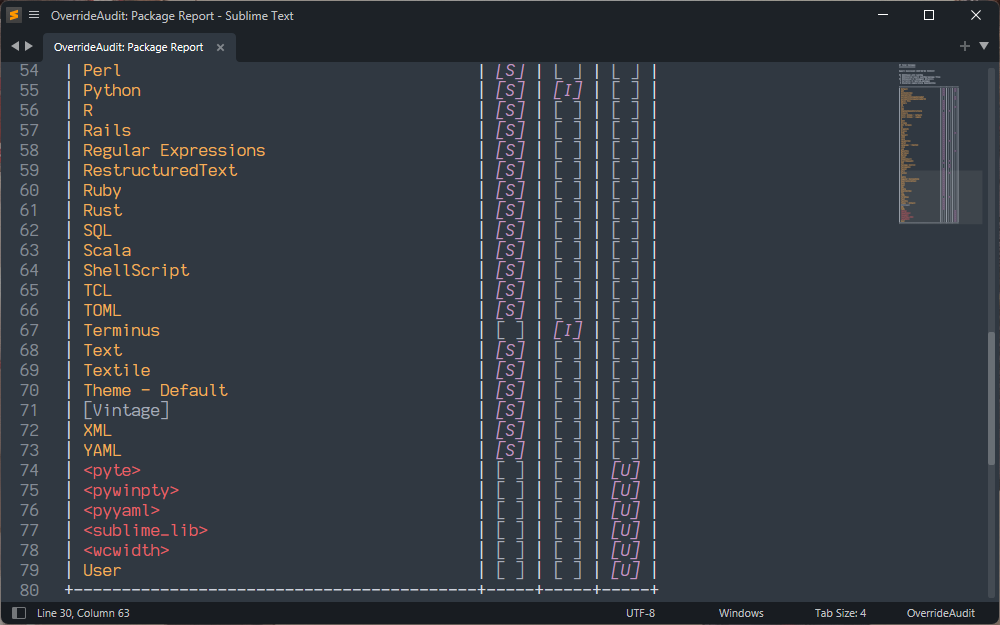Package Report
The Package Report provides you with a complete list of all packages that you currently have installed in Sublime Text, along with extra information about them such as:
-
Whether it is a package that ships with Sublime or was installed by you (and if so, how)
-
Which packages are ignored by Sublime and which are dependencies of installed packages
-
The relative package load order of your packages
Creating a Package Report⚓︎
Create a Package Report by selecting the Tools > OverrideAudit > Package Report menu item or by selecting OverrideAudit: Package Report from the command palette.
The result of this is a tabular report listing all of your installed packages and their attributes.
Report Contents⚓︎
The Package Report consists of a table that lists all of the packages you currently have installed for Sublime Text, along with a header that serves as both a legend to tell you what the symbols in the report mean and as a count for all packages you have installed.
Package names in the report have names reported in three different ways, conveying extra information about that package:
-
Packages in
[Square Brackets]are currently being ignored by Sublime Text because you have placed them in theignored_packageslist, such as theVintagepackage in the screen shot above. -
Packages in
<Angle Brackets>are dependency packages that are providing support for packages you have installed, such assublime_libin the screen shot above - All other packages are just normal Sublime Text packages
Note
As of Package Control 4, many package dependencies are installed as actual libraries rather than as special dependency packages. As such, you may not see all or even any dependencies in the report.
Packages themselves can be represented in any or all of the following states:
[S]if this is a package that ships with Sublime Text by default[I]if this is a package that you installed as asublime-packagefile[U]if this package contains unpacked files in thePackagesfolder.
In order to contain an override, a package must both contain [U]npacked files as well as being installed as a sublime-package file (that is, either [S]hipped with Sublime or [I]nstalled by you). This documentation contains a terminology guide if you are unfamiliar with these terms as well as a page on overrides if you are unclear on what they are or how you would create one.
The packages in the table are listed in roughly the order that Sublime loads them when it starts (see Merging and Order of Precedence in the Sublime Text Community Documentation for full details).
Hovering the mouse over the name of a package in a package report (or in any report) will show a hover popup with more information about the package, such as it's version and description, among other details.

